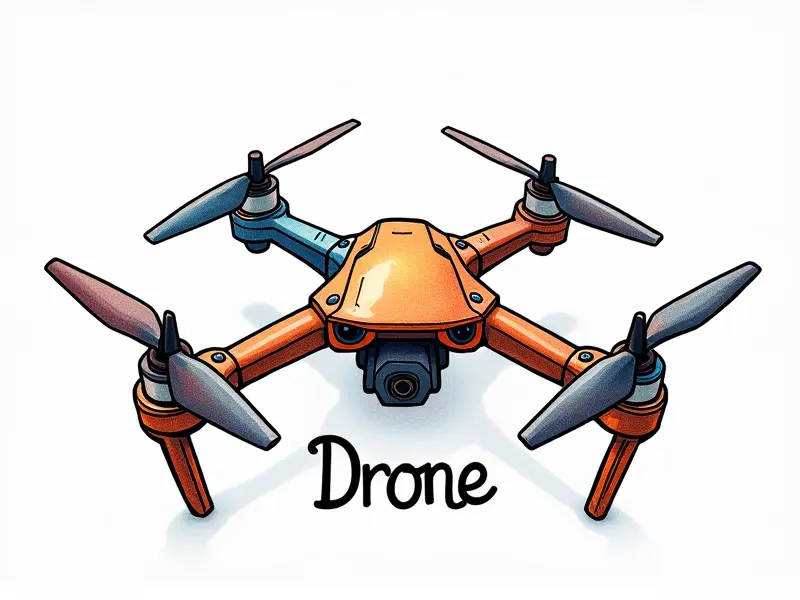Can FPV drones fly in the rain?

Can FPV Drones Handle Rain?
Flying first-person view (FPV) drones in various weather conditions is a common concern among enthusiasts. One of the most pressing questions is whether these high-performance aircraft can handle rain. While some models are designed with certain levels of water resistance, it's crucial to understand that FPV drones are not inherently waterproof and require careful consideration before attempting flight in wet conditions.
Flying FPV Drones in Wet Weather
FPV drone pilots often face the dilemma of whether to fly their beloved machines during light rain or drizzle. The decision hinges on several factors, including the drone's design, battery capacity, and the pilot’s experience with flying in adverse conditions.
Is It Safe to Fly FPV in Rain?
Safety is paramount when considering whether to fly an FPV drone during rain. Wet weather can introduce numerous hazards that may compromise both the drone's performance and the safety of the operator. Short circuits, reduced visibility, and increased risk of damage are just a few concerns.
How Rain Affects FPV Drone Performance
Rain can significantly impact an FPV drone’s performance in several ways:
- Battery Drain: Wet conditions can cause rapid battery depletion due to increased electrical resistance and moisture affecting the internal components.
- Signal Interference: Raindrops can disrupt radio signals, leading to lag or loss of control.
- Motor Efficiency: Water droplets on motors and propellers can reduce their efficiency and increase wear.
Tips for Flying FPV Drones in Light Rain
If you decide to fly your FPV drone during light rain, here are some tips to mitigate risks:
- Use Water-Resistant Coatings: Apply waterproof coatings or sprays designed specifically for electronic devices.
- Short Flight Times: Limit flight duration to minimize exposure to moisture.
- Cover Critical Components: Use protective covers or wraps on the drone's electronics and motors.
Impact of Rain on FPV Drone Battery Life
The impact of rain on battery life is a critical consideration. Moisture can cause internal resistance, leading to faster depletion of power reserves. Additionally, cold temperatures associated with rainy weather can further reduce battery efficiency and lifespan.
Weatherproofing Your FPV Drone for Rainy Days
To better prepare your drone for wet conditions:
- Seal Joints and Ports: Use waterproof tape or silicone to seal any openings where water can enter.
- Select Weather-Resistant Components: Opt for motors, propellers, and other parts designed to withstand moisture.
Risks of Flying FPV Drones in Wet Conditions
Flying an FPV drone during rain comes with inherent risks:
- Electrical Short Circuits: Moisture can cause short circuits, damaging sensitive electronic components.
- Reduced Flight Time: As mentioned earlier, wet conditions significantly reduce battery life and flight duration.
Should You Avoid Flying FPV Drones in the Rain?
In most cases, it is advisable to avoid flying FPV drones during rain unless you have taken extensive precautions. The risks often outweigh the benefits, especially for standard consumer-grade drones that lack robust water resistance.
Can You Fly FPV Drones During a Drizzle?
Flying an FPV drone in light drizzle is possible with proper preparation and caution. However, it’s essential to weigh the risks against the potential benefits before proceeding.
Effects of Rain on FPV Drone Performance
The effects of rain on FPV drone performance are multifaceted:
- Reduced Flight Stability: Water droplets can affect aerodynamics, leading to instability and reduced maneuverability.
- Increased Maintenance Needs: Regular cleaning and maintenance become more frequent due to the corrosive nature of moisture.
Conclusion
Flying FPV drones in rain poses significant challenges that can compromise both performance and safety. While some measures can be taken to mitigate risks, it is often best to avoid flying during wet conditions unless absolutely necessary and with thorough preparation. Understanding the limitations of your drone and adhering to safe practices will help ensure a longer lifespan for your equipment and safer flights.

